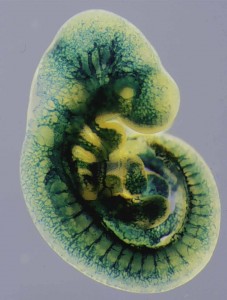Copenhaver, Gregory P.
The genome of any organism is an amazing piece of biology. It is a highly efficient and adaptive information storage, delivery and retrieval device capable of propagating, modifying and repairing itself. As such, understanding how genomes function is central to a broad range of disciplines including genetics, cell biology, biochemistry, developmental biology, and evolution. At the broadest level our lab is interested in understanding how the constituent parts of a genome, chromosomes, function and the dynamic processes that influence them.
To achieve this goal we primarily use the model flowering plant Arabidopsis thaliana. Arabidopsis has a number of characteristics that make it a great organism to study fundamental biological principles. It has a small “completely” sequenced genome with only five chromosomes. It is readily amenable to genetic, cytological and biochemical experimental approaches and it’s near world-wide distribution makes the use of natural variation a powerful tool. Also, here in the biology department at UNC-CH there is a particular emphasis on the use of Arabidopsis as a model system.
My lab is primarily interested in understanding how meiotic recombination is regulated at the genomic level in higher eukaryotes. While significant progress has been made in understanding many of the molecular components of the recombination process in lower eukaryotes like the yeast S. cerevisiae, far less is known about similar functions in complex multi-cellular organisms. Because of the complexity of higher eukaryotic genomes, the high level of gene duplication and divergence, the presence of DNA modification and the organization of multiple chromosomal domains into heterochromatin the molecules that govern meiotic recombination in these organisms are likely to be novel and of significant biological interest. Additionally, their identification may have practical benefits, contributing to our understanding of human disease genes and providing useful tools for agricultural bioengineering.
A second research area in the lab is investigating the role of centromere DNA in chromosome biology. Centromeres are the chromosomal domains that direct segregation during cell division by mediating a number of critical functions including: attachment of the chromosomes to the spindle microtubules, nucleation of kinetochore proteins, and maintenance of sister chromatid cohesion. Arabidopsis centromeres are some of the best characterized among higher eukaryotes. Currently the efforts in the lab are focused on obtaining a complete definition of the DNA within the genetically defined centromeres of Arabidopsis.


